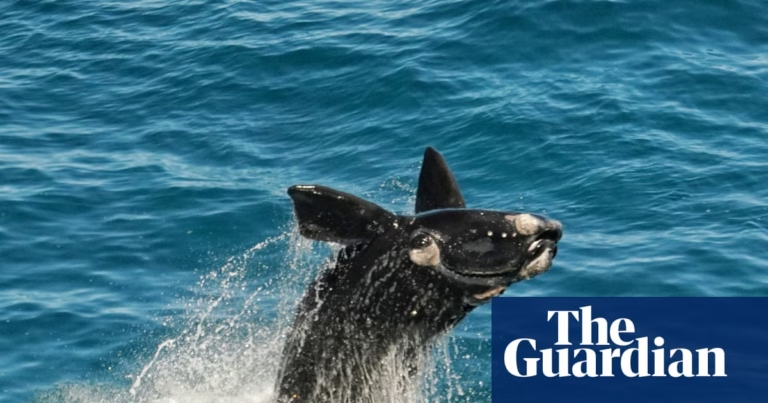The collision between two large shipping vessels in the North Sea raises significant questions about how such an event could occur – and what its effect might be. Here we set out what we know so far.
What happened?
A US-chartered oil tanker, Stena Immaculate, was anchored in the North Sea about 13 miles off the coast of Yorkshire, when it was struck by a container ship, the Solong, just before 10am UK time on Monday.
The Solong was travelling at a speed of 16 knots when it collided with the tanker, causing a “massive fireball” as both vessels scrambled to evacuate.
The Stena Immaculate was carrying 220,000 barrels of jet fuel in 16 segregated cargo tanks, according to the US maritime firm Crowley, which manages the tanker. At least one cargo tank carrying Jet A-1 fuel was ruptured and leaked into the North Sea, it said.
The Solong was initially reported to have been carrying containers of the highly toxic chemical sodium cyanide – but the vessel’s owner, the German firm Ernst Russ, later said none of the toxin was on board.
The Solong’s master, a 59-year-old Russian national, was arrested on Tuesday on suspicion of gross negligence manslaughter, as Humberside police began a criminal investigation. His nationality was confirmed by Ernst Russ, which said the Solong’s crew were a mix of Russians and Filipinos.
Was foul play involved?
The main focus of the investigations is how two modern ships, fitted with advanced radar technology, could collide in seemingly calm weather conditions.
A White House official reportedly told a US news outlet that it was unable to rule out foul play, amplifying speculation that the Stena Immaculate may have been targeted deliberately as it was carrying cargo for the US military.
This theory was downplayed by the UK on Tuesday, as initial investigations have found no evidence to suggest such a motive. The UK transport minister Mike Kane told MPs it was clear “something did go terribly wrong” but added: “Whether there was a foul play I think is speculation. There is no evidence to suggest that at the moment.”
Is human error to blame?
Maritime traffic data showed the Solong travelling directly towards the Stena Immaculate without changing course before the vessels collided.
Andy Teasdale, a marine safety adviser to the Institute of Marine Engineering, Science and Technology, said the tracking data showed “something was potentially amiss” on the Solong, which was sailing under a Portuguese flag.
Central to understanding this would be recovering the voyage data recorders from both vessels. Often referred to as the shipping equivalent of an aeroplane’s “black box”, VDRs hold data on a vessel’s speed, depth under keel, radio communications, bridge audio and radar data.
Teasdale said all those rescued would be interviewed and given precautionary drug and alcohol tests.
Dr Seyedvah Vakili, of the University of Southampton, said at this stage it was “difficult to determine the main cause of the collision” but that in most cases “human factors play a significant role”.
Jin Wang, a professor of marine technology at Liverpool John Moores University, said human error was likely to have “played a significant role”, adding: “It seems improbable that all of the factors leading to the collision of this nature could have occurred simultaneously without human error.”
Could a technical mishap be the problem?
One theory is that the Stena Immaculate may have been “radar silent” at the time for security reasons given its sensitive cargo, said Tiago Alves, a professor at Cardiff University’s School of Earth and Environmental Sciences.
This would have made it undetectable on the screens of nearby vessels, which may not have triggered the appropriate alarms on the Solong. However, it would have been visible to the naked eye from a distance.
Alves said: “The oil tanker was seemingly under a military mission and might have been found, unexpectedly, anchored in an area that is not common for ships to moor. The tanker is now visible on vesselfinder.com [a ship tracking website], but it may have also been radar silent at the time of the collision for security reasons. Only a thorough investigation will reach a final conclusion on what happened.”
Another theory is that the Solong’s autopilot function failed. Martyn Boyers, the chief executive of the port of Grimsby East, near the site of the collision, said he suspected the Solong had been on autopilot: “If it’s been put on autopilot and there’s no one on the bridge, which could happen, then it’d just go straight on.”
What risks do the ships’ cargoes pose?
Jet fuels are toxic to marine life, said the US National Oceanic and Atmospheric Administration: “Aquatic organisms that come in direct contact with naturally dispersed and entrained jet fuel in the water column may be killed.”
However, experts were optimistic that the highly volatile fuel spilled on Monday would have burned or evaporated quickly. Bacteria may also degrade the relatively small hydrocarbons found in the fuel, according to Mark Sephton, professor of organic geochemistry at Imperial College London.
The thicker bunker oil used to power the ships could be more problematic. Persistent oils such as marine diesel can smother marine habitats, affecting the ability of wildlife to regulate their body temperature, which could kill them, said Dr Alex Lukyanov, of the University of Reading.
What impact could it have on the environment?
The ships collided just east of the Yorkshire coast and Humber estuary, an ecosystem of “immense biological, cultural and economic importance” said Dr Tom Webb, a lecturer in marine ecology at the University of Sheffield.
“Wading birds and waterfowl gather in large numbers as they move between wintering and breeding grounds, while soon Yorkshire’s iconic seabirds will be coming inshore to breed at sites like the world famous Brampton cliffs,” Webb said.
Marine protected areas on the coast close to the collision site include Flamborough Head and Holderness offshore marine conservation zone – rich habitats supporting marine wildlife, including fish, bivalves, crabs and birds. Farther out to sea is the Southern North Sea special area of conservation, important for harbour porpoises.
Dr Leslie Mabon, a senior lecturer in environmental systems at the Open University, said: “It’s close to nesting season, so puffins, gannets, kittiwakes among others could be flying around the area and could be exposed to oil or petrol. Similarly, there are dolphins and seals.
“This is also a rich fishing environment, with the Grimsby fishing port nearby, and there could be economic consequences if fishing has to be stopped or scaled back.”







